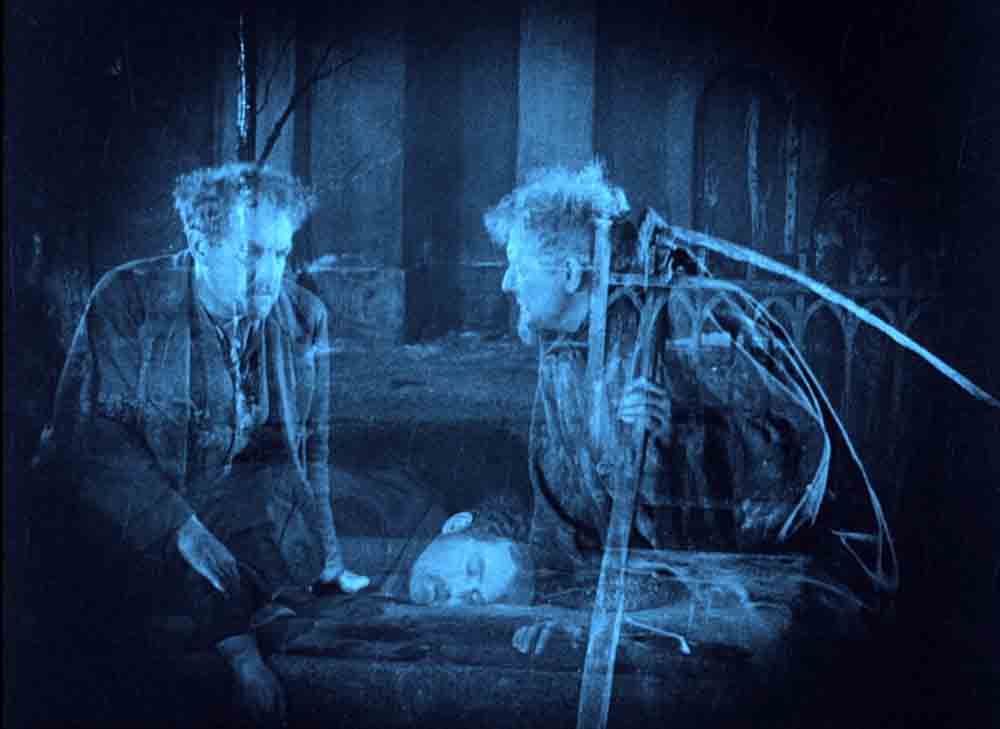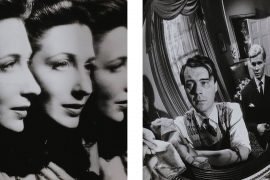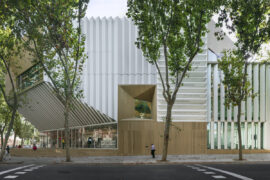During the heat waves of Barcelona’s summer, night temperatures tend to give a certain respite, especially if accompanied by some kind of breeze, and thus allow you to enjoy the city outdoors. They suggest a more leisurely and pleasant rhythm, to perform leisure activities in a context that seems transformed. Cinephile passion is one of the most gratifying, few amongst us doubt it. Hence the many offers that, between July and August, are offered under the popular and always successful formula: cinema a la fresca.
“Open air” cinema can be enjoyed in a neighborhood square or on the walls of Montjuic Castle, but also in museums such as Cosmocaixa, within the framework of an interesting cycle dedicated to science fiction along the exhibition Robots. Human and Machines or the Centre de Cultura Contemporània (CCCB) that, from a very different perspective -we could say, practically antithetical and therefore complementary- gets close, somehow abysmally, to the reality of the unknown. In this case, following the inspiration of its current show, entitled The black light. Secret traditions in art since the fifties.
ILLUMINATED CINEMA
In the 2018 edition of the film series popularized by the object that enables enjoyment, the much longed-for “Gandules” (the type of summer chair that ensures high comfort, a body nonchalance that allows maximum concentration in the projection) are scheduled three films every week from August 7th to 23rd, compiled under the heading “Illuminated cinema: Magic, altered states and the occult“. Triad of phenomena, or activities that enter the scope of the paranormal, being usually opposed to the light of reason, and that visually bring experiences of high emotional intensity.
Most films of the cycle have an objective interest -the first, for example, is a milestone of cinematography- although there are also some for open-minded moviegoers, scare-challenged palates and lovers of rarities in general. Without palliative, in any case, we are eager to recommend the opening one, on August 7th –The Phantom Carriage (Körkarlen) by Victor Sjöström, appeared in 1921- which, in addition, will allow the spectator to become familiar with the whole program.
Being prior to the sound of the cinema -committed for the first time six years later, in The Jazz Singer– the film by Victor Sjöström was often accompanied by live music, which remains on this occasion as an especially noteworthy element. The performance will be in charge of the Obsidian Kindgom group, which in the words of the organizers is an “internationally recognized Barcelona band within the metal scene, the drone and the industrial and avantgarde music. Its immersive, experimental and forceful sound blends perfectly with the magical and phantasmagorical spirit of a great classic like The Phantom Carriage“. A special event -a “film-concert” session- that will show a film based on a Swedish legend, according to which the last sinner of the year is punished with the task of driving the carriage that picks up the deceased during the next year. Tremendous plot for the post-romantic mentality, cinematographically made in an even more unusual way -for its novelty, at least with that degree of sophistication- as is the technique of double exposure.
“The current cycle offers the opportunity to discover rather inaccessible films and enter the hard core of heterodoxic creators who, certainly, move away from the mainstream”
DOUBLE EXPOSURE
The juxtaposition of simultaneous frames -as a product of magic- shows the presence of translucent bodies. A technique that had to produce amazement, to the extent that allows the living and the dead to live together in the reality of that fiction. Phenomena that will reappear, equally sinister, ten years later, in the marvelously disturbing Vampyr (1931) by Carl Theodor Dreyer, specifically in the episode of the protagonist’s dreaming, who faints and believes himself dead, coming to attend (the vision of) his own funeral.
We shall insist on how fundamental for the history of cinema is the genre we know today as Horror. A genre rooted in the concerns of the late romantic mentality, that discovered in the cinematographic technique the possibility of visualizing the invisible, being perpetuated, still, in the twentieth century. The cinema grants reality to the shadow, to the reverse of the light. It opens, thus, an infinity of narrative possibilities, which can address those atavistic fears, barely verbalized by the human being.
FEATURED MOVIES
Other movies selected in the current Gandules’ cycle show that same dialectic of vision, from perspectives that are sometimes deliberately incoherent. For example, when reflecting altered states of consciousness, in the awkward Arrebato (1979) by Iván Zulueta, in which the possibility of one, or several parallel realities opens up. Realities susceptible to being discovered by an occultist science, and that can be as terrifying as those captured in Night of the Demon (1957), by Jacques Tourneur. Mysterious phenomena such as spiritual illumination is illustrated in The Wicker Man (1973), by Robert Hardy, or, also, the influence of magic on the erotic instincts in The Love Witch (2016) by Anna Biller.
The latest film scheduled -and most recently appeared- is obviously parodic, affected by a 70s look that enables the double interpretation: “a venomous film that addresses the figure of the witch from a feminist viewpoint and raises important issues about the toxicity of the myth of romantic love”, explain the organizers. The circle closes with this mocking rereading of a question that, in fact, Dreyer raised very seriously in Dies irae (1943) by means of aesthetics that linked to the period that had enhanced the belief in love sublimation. This points dramatically the gap between the longing and the consequences of its impossible realization, often remembered by psychoanalysis.
THE OTHER SIDE OF CONSCIOUSNESS
The mechanisms that lead to receive what is lightly reasonable -or not reasonable at all- are multiple, and evolve epocally, as well as the need to embrace beliefs that seem to reconcile emotions and reason. Hélas, the studies -very rational- show what Nietzsche intuited in a context close to that of the creation of The Phantom Carriage: rarely the behaviors -or, even human speeches, Hobbes predicted- are supported by rational arguments, since the individuals are usually moved by a will that tends to escape them. More than pertinent, thus, the cinephile excursion on the other side of consciousness, which unconsciously pushes to act or suffer. If not with the purpose of staying in the parallel world of fiction, at least to enjoy or abominate -from a certain, prudent distance- the possibilities inherent in the journey.
The journey proposed by the CCCB does not intend to be exhaustive, nor is it comfortably focused on the big names, as is otherwise usual. Gandules’18 represents, therefore, a new opportunity to discover rather inaccessible films and enter the hard core of heterodoxic creators who, certainly, move away from the mainstream.
Featured image: Movie frame from The Phantom Carriage



















